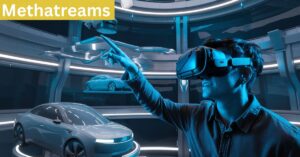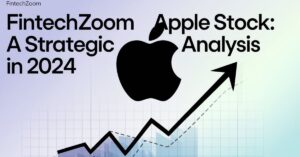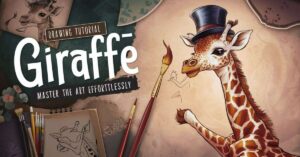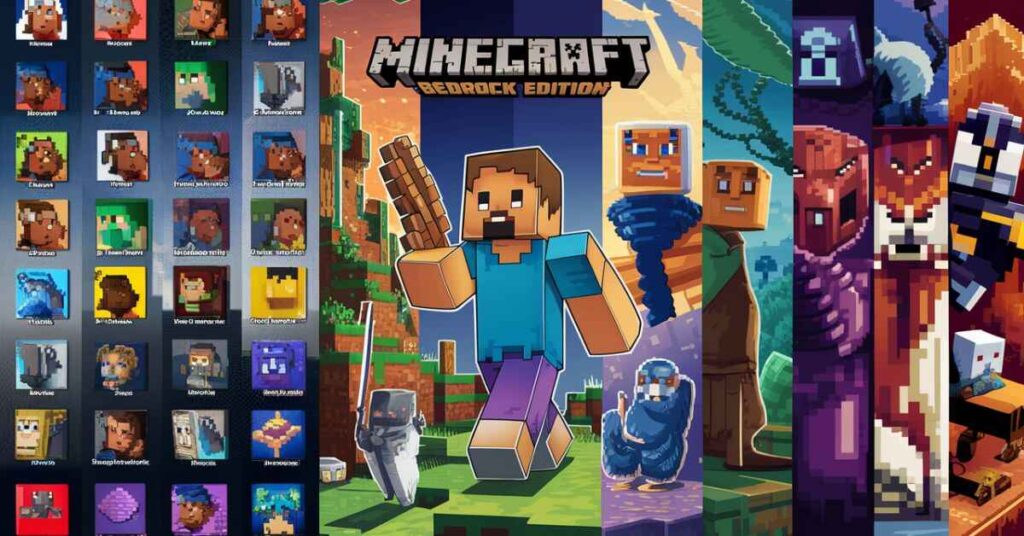
Introduction: A Journey Through Visual Transformation
Minecraft, the blocky sandbox game that has captured the hearts of millions, has undergone a fascinating visual evolution since its inception. This journey is particularly evident in the Bedrock Edition, where game icons and banners have played a crucial role in shaping the game’s identity across various platforms. As we delve into the rich history of Minecraft: Bedrock Edition’s visual elements, we’ll uncover the artistry, thought processes, and technological advancements that have shaped its iconic look. The Evolution of Minecraft: Bedrock Edition Game Icons and Banners.
The evolution of Minecraft: Bedrock Edition game icons and banners isn’t just about pretty pictures; it’s a story of adaptation, innovation, and community engagement. These visual elements serve as the first point of contact for players, setting expectations and igniting excitement for the adventures that await within the game.
Early Icons and Banners: The Beginnings
When Minecraft: Bedrock Edition (initially known as Pocket Edition) first graced mobile devices in 2011, its visual identity was in its infancy. The early icons drew heavy inspiration from the Java Edition, featuring the iconic grass block that has become synonymous with Minecraft. However, the designers faced a unique challenge: how to capture the essence of an expansive 3D world in a tiny square on a mobile screen.
The initial icon design was simple yet effective:
- A grass block tilted at a slight angle
- Pixelated edges to maintain the game’s signature look
- A simple background to ensure visibility on various devices
This minimalist approach set the stage for future iterations, balancing recognition with the need for clarity at small sizes. The Evolution of Minecraft: Bedrock Edition Game Icons and Banners.
Initial Years: 2011-2015
2011: The Birth of Bedrock Edition
The launch of Minecraft: Pocket Edition marked the beginning of what would become the Bedrock Edition. The first icon was a humble representation of the game, focusing on the grass block that players would soon learn to love and manipulate.
“Our goal was to create an icon that was instantly recognizable, even on the smallest screens.” – Mojang designer (anonymous)
2012-2013: Establishing a Visual Identity
As the game expanded, so did its visual representation. The years 2012 and 2013 saw subtle refinements to the original design:
- Enhanced shading to give the grass block more depth
- Experimentation with different background colors
- Introduction of platform-specific elements to differentiate between iOS and Android versions
2014: Cross-Platform Expansion
With Minecraft’s popularity soaring, 2014 brought new challenges as the game expanded to Windows Phone. This expansion necessitated a more unified approach to icon design, balancing platform-specific requirements with the need for a cohesive brand identity.
2015: Maturity and Professionalism
By 2015, Minecraft: Bedrock Edition had grown significantly, and its visual elements reflected this maturity. The icons and banners began to showcase:
- More sophisticated lighting and shading techniques
- Inclusion of additional Minecraft elements beyond the grass block
- A more polished and professional look, appealing to a broader audience
Expansion Era: 2016-2018
2016: The Beginning of Cross-Platform Unification
2016 marked a turning point in Minecraft’s visual journey. With cross-platform play on the horizon, the need for a unified visual identity became paramount. The icons and banners began to evolve:
- Introduction of characters and mobs alongside the classic blocks
- More dynamic compositions to reflect the game’s growing complexity
- Consistent color schemes across all platforms
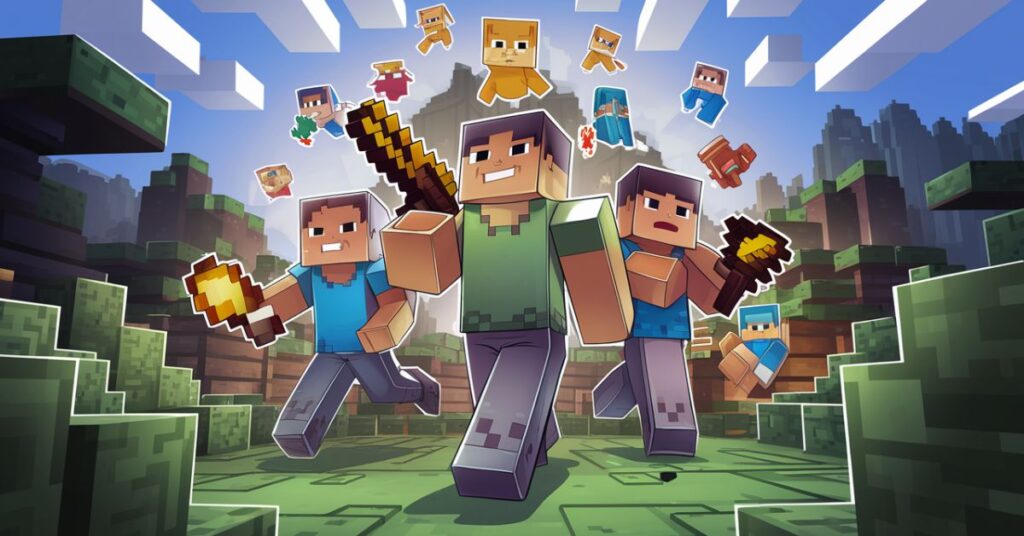
2017: The Better Together Update
The Better Together Update was a game-changer, both for gameplay and visual design. The new icons and banners reflected this monumental shift:
- Emphasis on multiplayer elements in the visuals
- Incorporation of diverse biomes and structures
- A new logo design that would become the standard across all platforms
2018: The Aquatic Update
With the Aquatic Update, Minecraft’s visual identity dove into new depths. The icons and banners now featured:
- Underwater scenes and creatures
- Vibrant blues and greens to represent the ocean biomes
- Seasonal variations, introducing limited-time visual changes
Current Trends: 2019-Present
2019: The Village & Pillage Update
The Village & Pillage Update brought new life to Minecraft’s visual elements:
- Incorporation of villager and pillager characters in icons
- Architectural elements from villages featured prominently
- More detailed and narrative-driven banner designs
2020: The Nether Update
2020’s Nether Update saw a fiery transformation in Minecraft’s visuals:
- Rich, warm color palettes inspired by the Nether dimension
- Inclusion of new mobs like Piglins in icon designs
- Dynamic, action-oriented scenes depicting Nether exploration
2021: The Caves & Cliffs Update
The Caves & Cliffs Update presented a unique challenge: representing vertical exploration in 2D icons:
- Clever use of perspective to show both cave depths and mountain heights
- Introduction of new textures and block types in visual elements
- Emphasis on the vastness and variety of Minecraft’s world
2022: The Wild Update
With The Wild Update, Minecraft’s icons and banners took on a more naturalistic and mysterious tone:
- Dark, atmospheric designs featuring the Deep Dark biome
- Prominent placement of new mobs like the Warden and frogs
- Lush, green elements representing the mangrove swamps
2023-Present: Building on the Legacy
Recent years have seen Minecraft: Bedrock Edition’s visual identity continues to evolve while staying true to its roots. The latest icons and banners showcase:
- A perfect blend of classic elements with new features
- Increased attention to detail, leveraging higher resolution displays
- Community-inspired designs that reflect player creativity
The First Major Overhaul: A New Identity
One of the most significant moments in Minecraft: Bedrock Edition’s visual evolution was its first major icon overhaul. This change marked a shift from the simple grass block to a more comprehensive representation of the Minecraft experience.
Key aspects of this overhaul included:
- Introduction of Steve, the default player character
- Dynamic pose showing Steve mid-swing with a pickaxe
- Background elements showcasing various biomes and structures
This new design was met with mixed reactions from the community. While some praised the more dynamic and representative icon, others felt nostalgic for the simpler, classic design. The Evolution of Minecraft: Bedrock Edition Game Icons and Banners.
Adapting to Platforms: Versatility in Design
One of the unique challenges faced by Minecraft: Bedrock Edition has been maintaining a consistent visual identity across a diverse range of platforms. Each platform comes with its own set of guidelines, resolution requirements, and user expectations.
Here’s a breakdown of how Minecraft adapted its icons for different platforms:
| Platform | Design Considerations | Unique Elements |
|---|---|---|
| Mobile | Small size, high visibility | Simplified designs, bold colors |
| Console | Large format, distance viewing | More detailed, action-oriented scenes |
| PC | Variable sizes, desktop integration | Scalable designs, rich textures |
The design team’s ability to create versatile assets that work across these platforms while maintaining the essence of Minecraft has been crucial to the game’s visual success.
Modern Minecraft: A Blend of Nostalgia and Innovation
Today’s Minecraft: Bedrock Edition icons and banners represent a careful balance between honoring the game’s roots and showcasing its ongoing evolution. This blend is achieved through:
- Retaining core elements like the grass block and pixelated style
- Incorporating new features and mobs in creative ways
- Using advanced graphical techniques while maintaining the game’s signature look
Capturing the Essence of Minecraft
The true art of Minecraft’s visual identity lies in its ability to capture the game’s essence in a single image. Current icons and banners masterfully convey:
- The game’s endless possibilities for creativity
- The sense of adventure and exploration
- The importance of community and multiplayer experiences
- The charm of Minecraft’s unique aesthetic
The Power of Visual Storytelling
Minecraft’s icons and banners do more than just identify the game; they tell a story. With each major update, these visual elements evolve to:
- Hint at new features and gameplay mechanics
- Set the tone for the update’s theme
- Generate excitement and speculation within the community
For example, the Nether Update’s fiery, otherworldly icons immediately conveyed the sense of danger and excitement players could expect from the revamped Nether dimension.
Behind the Scenes: The Design Process
The creation of Minecraft: Bedrock Edition’s icons and banners is a collaborative effort involving artists, developers, and community feedback. The process typically involves:
- Conceptualization based on upcoming features or themes
- Multiple design iterations and internal reviews
- Technical considerations for different platforms and resolutions
- Community reviews and feedback integration
- Final polishing and implementation
This iterative process ensures that the final designs not only look great but also resonate with the player base.
The Future of Minecraft’s Visual Identity
As Minecraft continues to grow and evolve, so too will its visual identity. Future trends may include:
- More interactive and animated icons on supporting platforms
- Increased personalization options for players
- Integration of augmented reality elements in promotional materials
- Continued refinement of the balance between classic and modern aesthetics
Conclusion
The evolution of Minecraft: Bedrock Edition game icons and banners is a testament to the game’s enduring popularity and adaptability. From humble beginnings to its current status as a global phenomenon, Minecraft’s visual journey reflects not just changes in technology and design trends, but also the growing and diverse community that calls this blocky world home.
As we look to the future, one thing is certain: the iconic grass block may change in its presentation, but it will always represent the endless possibilities that await in the world of Minecraft.
FAQs
Are there banners in Minecraft bedrock?
Yes, banners are available in Minecraft: Bedrock Edition. Players can create and customize banners using various dyes and patterns, similar to the Java Edition. These banners can be used for decoration, marking territories, or creating unique designs within the game.
What is the oldest version of Bedrock?
The oldest version of what would become Bedrock Edition was Minecraft: Pocket Edition, released in August 2011 for Android devices. This initial release was very limited compared to today’s version but laid the foundation for the cross-platform edition we now know as Bedrock.
Why did they change the Minecraft icon?
Minecraft has changed its icon several times to reflect major updates, cross-platform unification, and evolving design trends. These changes aim to keep the game looking fresh and relevant while also highlighting new features and maintaining brand recognition across different platforms.
What is in Bedrock but not Java?
Bedrock Edition has several features not found in Java Edition, including:
- Built-in marketplace for community-created content
- Cross-platform play between mobile, console, and Windows 10/11
- Better performance optimization for lower-end devices
- Certain exclusive mobs like the Warden (temporarily)
- Different redstone mechanics
What is in Bedrock that isn’t in Java?
Expanding on the previous answer, Bedrock Edition also offers:
- Native controller support
- Easy multiplayer setup through friends lists
- Customizable character creator
- Education Edition features in certain versions
- Different combat mechanics (though these are being unified)
